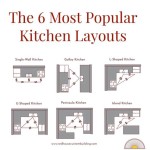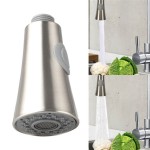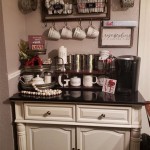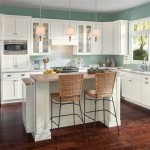Kitchen Storage Racks Tips For Keeping Your Organized Safely
Kitchens often become epicenters of household activity. They are not only spaces dedicated to food preparation but also serve as gathering places for families and friends. Consequently, kitchens tend to accumulate many items, from cookware and utensils to pantry staples and small appliances. Effective organization is crucial for maintaining a functional and safe kitchen environment. Kitchen storage racks are essential for optimizing space, improving accessibility, and minimizing safety hazards.
The proper utilization of kitchen storage racks can transform a cluttered and chaotic kitchen into an organized and efficient workspace. Different types of racks are designed to address specific storage needs, and understanding these options is the first step toward creating an organized kitchen. This article explores various kitchen storage rack solutions and provides guidance on their proper implementation, emphasizing safety considerations to ensure a secure and well-maintained kitchen environment.
Selecting the Right Type of Kitchen Storage Rack
The first step toward effective kitchen organization involves choosing the appropriate type of storage rack. Several factors should influence this decision, including the kitchen's layout, available space, and specific storage requirements. A thorough assessment of these factors will enable the selection of racks that maximize efficiency and enhance the overall functionality of the kitchen.
Pantry Racks: Pantry racks are designed for organizing food items and other pantry essentials. These racks often feature adjustable shelves, allowing for customization based on the size and quantity of stored items. When selecting pantry racks, it is important to consider the weight capacity of the shelves to ensure they can safely support canned goods, jars, and other heavy items. Proper installation is essential to prevent tipping or collapse, especially when the pantry is fully stocked.
Wall-Mounted Racks: Wall-mounted racks are a space-saving solution, particularly beneficial for smaller kitchens. They can be used to store a variety of items, from pots and pans to spices and utensils. When installing wall-mounted racks, it is imperative to use appropriate anchors and hardware to ensure they are securely attached to the wall. The type of wall (e.g., drywall, plaster, concrete) will influence the selection of appropriate anchors. Overloading wall-mounted racks can compromise their stability and potentially cause them to detach from the wall, posing a safety risk.
Under-Sink Racks: The space beneath the kitchen sink is often underutilized. Under-sink racks are designed to maximize this space by providing storage for cleaning supplies, dish soap, and other household items. These racks typically feature adjustable shelves or pull-out drawers, allowing for easy access to stored items. When using under-sink racks, it is important to be mindful of potential leaks or spills. Storing items in waterproof containers can help protect them from water damage. Additionally, avoiding the storage of hazardous chemicals under the sink is crucial to prevent accidental ingestion or contamination.
Corner Racks: Corner racks are designed to fit into the often-awkward corners of kitchen cabinets, optimizing space that might otherwise be wasted. These racks typically feature rotating shelves or pull-out mechanisms, providing easy access to items stored in the back of the cabinet. When installing corner racks, it is essential to ensure they are properly aligned and securely attached to the cabinet walls. Overloading corner racks can strain the rotating mechanism or pull-out system, potentially leading to damage or malfunction.
Pot Racks: Pot racks are designed to hang pots, pans, and other cookware from the ceiling or wall. They are an excellent solution for kitchens with limited cabinet space. Pot racks can be particularly useful for storing large or irregularly shaped cookware that is difficult to store in cabinets. When installing pot racks, it is crucial to ensure they are securely attached to the ceiling joists or wall studs. The weight capacity of the pot rack should be carefully considered to avoid overloading it. Additionally, the height of the pot rack should be adjusted to prevent head injuries.
Spice Racks: Spice racks are designed to organize spices and herbs, making them easily accessible during cooking. These racks come in various styles, including wall-mounted, countertop, and cabinet-mounted options. When selecting spice racks, it is important to consider the number of spices to be stored and the available space. Proper labeling of spices is essential for easy identification. Additionally, storing spices away from direct sunlight and heat can help preserve their flavor and aroma.
Implementing Effective Organization Strategies
Once the appropriate kitchen storage racks have been selected, implementing effective organization strategies is crucial for maximizing their functionality and ensuring a well-organized kitchen. These strategies involve categorizing items, optimizing space utilization, and implementing labeling systems.
Categorization: Grouping similar items together simplifies the task of locating specific items and prevents clutter. For example, baking supplies should be stored together, and spices should be grouped according to type (e.g., herbs, spices, seasonings). Clear categorization streamlines the cooking process and reduces the time spent searching for ingredients or utensils. When categorizing items, it is important to consider frequency of use. Items that are used more frequently should be stored in easily accessible locations.
Space Optimization: Maximizing space utilization involves using vertical space effectively and employing storage solutions that minimize wasted space. Adjustable shelves allow for customization based on the size and quantity of stored items. Using containers and bins to store smaller items can prevent clutter and make it easier to locate specific items. Rolling carts can be used to create mobile storage units, providing flexibility and convenience. When optimizing space, it is essential to avoid overcrowding. Overcrowding can make it difficult to access items and increase the risk of accidents.
Labeling Systems: Implementing a labeling system is crucial for easy identification of stored items. Labels can be used to identify the contents of containers, the expiration dates of food items, or the location of specific utensils. Clear and consistent labeling reduces the time spent searching for items and minimizes the risk of using expired or spoiled food. Labeling systems can be implemented using label makers, adhesive labels, or even handwritten labels. The key is to ensure that the labels are clear, legible, and durable.
Regular Maintenance: Maintaining an organized kitchen requires regular maintenance. This involves periodically decluttering, cleaning storage racks, and reorganizing items as needed. Decluttering involves removing items that are no longer needed or used. Cleaning storage racks prevents the buildup of dust, dirt, and food particles. Reorganizing items as needed ensures that the kitchen remains functional and efficient. Regular maintenance is essential for preventing clutter, minimizing the risk of accidents, and maintaining a clean and healthy kitchen environment.
Utilizing Drawer Organizers: Drawer organizers are effective for maximizing space and organization within kitchen drawers. They come in various styles and sizes, designed to accommodate different types of utensils, cutlery, and kitchen gadgets. Using drawer organizers prevents items from shifting and becoming jumbled, making it easier to locate specific items. They can also protect drawer surfaces from scratches and damage. When selecting drawer organizers, it is important to consider the size and shape of the drawers and the types of items that will be stored. Adjustable drawer organizers provide flexibility and allow for customization based on specific storage needs.
Ensuring Safety and Stability
Safety is paramount when installing and utilizing kitchen storage racks. Improper installation or overloading can lead to accidents and injuries. Adhering to safety guidelines is essential for creating a secure and well-maintained kitchen environment.
Proper Installation: Proper installation is critical for ensuring the stability and safety of kitchen storage racks. Following the manufacturer's instructions carefully is essential. Using appropriate anchors and hardware for the type of wall or surface is crucial for secure attachment. Ensuring that the racks are level and properly aligned prevents tipping or collapse. If unsure about the installation process, consulting a professional is recommended.
Weight Capacity: Exceeding the weight capacity of storage racks can compromise their stability and potentially cause them to collapse. It is important to adhere to the manufacturer's weight capacity guidelines. Distributing weight evenly across the shelves or racks minimizes the risk of localized stress. Avoiding overloading shelves with heavy items is essential. Regularly inspecting storage racks for signs of wear or damage can help identify potential safety hazards before they lead to accidents.
Sharp Edges and Corners: Ensuring that storage racks are free of sharp edges or corners prevents accidental cuts or scrapes. Using edge protectors or corner guards can provide added safety, especially in households with children. Regularly inspecting storage racks for any signs of damage or wear that could create sharp edges is essential. Replacing or repairing damaged racks promptly minimizes the risk of injury.
Accessibility: Storing heavy or bulky items on high shelves can create a safety hazard. Using a step stool or ladder to reach high shelves safely is essential. Avoiding the temptation to climb on countertops or chairs to reach items prevents falls. Ensuring that the kitchen is well-lit provides better visibility and reduces the risk of accidents. Rearranging items so that frequently used items are stored within easy reach minimizes the need to climb or stretch.
Chemical Storage: Proper storage of cleaning supplies and other chemicals is crucial for preventing accidental ingestion or contamination. Storing chemicals in a secure location, out of reach of children and pets, is essential. Using childproof locks on cabinets containing chemicals can provide added safety. Clearly labeling all chemical containers prevents confusion and reduces the risk of accidental misuse. Avoiding the storage of chemicals near food items is crucial to prevent contamination.
Preventing Pests: Proper food storage is essential for preventing pest infestations. Storing food in airtight containers minimizes the risk of attracting pests. Regularly cleaning storage racks and cabinets removes crumbs and spills that could attract pests. Using pest control products, such as traps or repellents, can help prevent infestations. Sealing any cracks or openings in the walls or floors prevents pests from entering the kitchen.
By implementing these kitchen storage rack tips and safety guidelines, one can create an organized, functional, and safe kitchen environment. The careful selection, installation, and maintenance of storage racks are essential for optimizing space, improving accessibility, and minimizing safety hazards in the heart of the home.

5 Step Ultimate Guide How To Organize The Perfect Pantry Cash And Kerry

How To Keep Your Pantry Organized Forever Sabrinas Organizing

30 Best Spice Rack Ideas To Save Space In A Small Kitchen

How To Keep Your Pantry Organised Tailored Cleaning Solutions

A Guide To Small Kitchen Organization Cook Craft Love

12 Easy And Realistic Pantry Organization Ideas That Will Help You Keep Your Kitchen Tidy

How To Keep Your Pantry Organized Forever Sabrinas Organizing

Pantry Organization Tips Made Easy

Keep Your Kitchen Cabinets Organized With These 21 Tips From Experts

Tips To Keep Kitchen Clean And Organized Our Oily House
Related Posts








